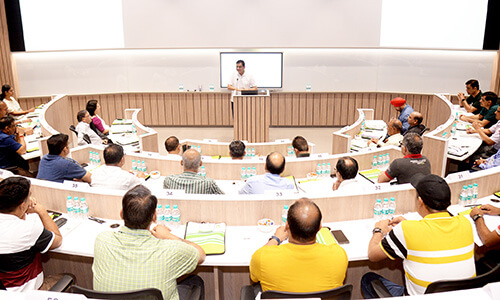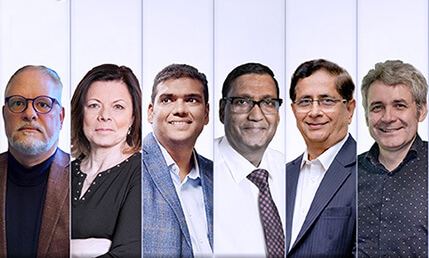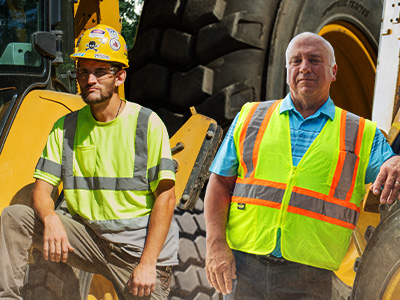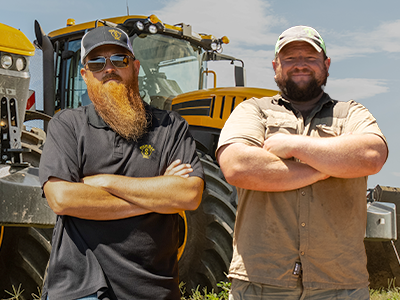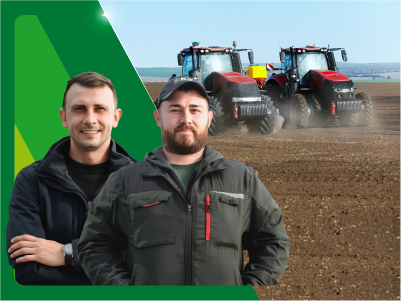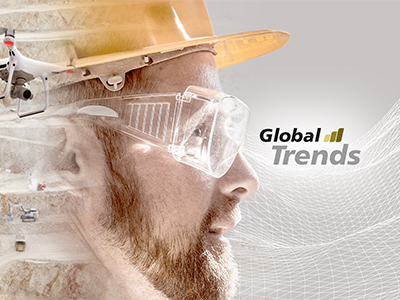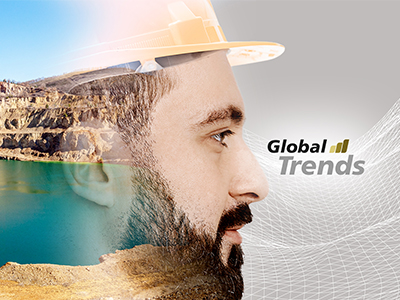Now, we're going to hear from someone who's on the sharp end of helping companies deliver those sustainability plans that Craig just described.
We have Robert Pell, who's the founder and CEO of Minviro, a British consultancy that helps global companies in the raw materials sector to help assess, quantify and mitigate their impacts. Robert, please join me in the studio.
Robert, a warm welcome to Global Trends.
Thanks for having me.
So, now, your background is as a geologist, you've worked in the mining industry and the company you founded, I understand, is built around your PhD.
Yes, that's right.
So, we're focused on quantifying the environmental impacts of producing raw materials for the low carbon economy, considering the CO2 intensity, taking into account different equipment the energy involved in the processing plants etc.
And you help companies understand the impact of those processes?
Yes, we help quantify the impact, but we also navigate the impact reduction roadmaps and helping them identify the levers they can pull for their projects to get where they want to get in terms of sustainability.
Excellent, so it's a trend that Craig described, working with those C-suite teams to translate their sustainability words into actions. Clearly, you saw an opportunity to tap into that with the business. So, has it been vindicated?
Yes, absolutely. One of the key areas in which we've seen widespread adoption is with the materials that feed the low carbon transition, so things like lithium, nickel, cobalt. We've worked with over 170 commercial projects since our foundation in 2019. And this is across the mining and the metal, the refining sector, but we also work with consumers of those materials. So, one example is we worked with Tesla to look at the impact of their supply chain for their batteries.
So you're upstream and downstream?
Yes.
Excellent, now, concerning the upstream work, we've heard from other guests about this huge demand for these materials to support the energy transition. It appears to be a dichotomy that we have this opportunity for decarbonisation, but we need these minerals and metals to support that.
So, are we simply moving the problem elsewhere?
That's a really good question, and that's exactly what we try and solve when we're doing life cycle assessment, you're taking a holistic approach. For example, when we're working with a downstream battery manufacturer or an EV manufacturer, there's always the question of is electrification better than combustion engines? Now, we're looking at a full history of production and use and comparing those from an environmental standpoint, and not just for one impact category as well.
And what are some of those categories? Climate change is one, I presume?
Yes, so, climate change is maybe the poster child of impact categories. But when you think about extracting materials from the ground and processing, there could be impacts on land transformation, on freshwater depletion, think impacts on toxicity or even impacts on biodiversity.
Alright, and can you help us explain what's involved in the life cycle assessment? Why are companies so fixated on it?
Good question, so, in principle, what you're doing when you're conducting a life cycle assessment is you're collating an inventory of all the material and energy inputs as well as the emission outputs, whether that's to land, air or water, and you're translating those into environmental impacts that I mentioned before. Now, it matters in a number of ways for these, the companies that are doing these life cycle assessments. One, they want to do better. Companies do want to do better. But also there's an economic driver for this. There's risks for these companies if they don't understand their environmental impacts. And we've seen this in other sectors. For example, there's now stranded assets for coal mines that used to have high value but now don't have the value they used to. So by doing life cycle assessment, you can really get a deep understanding of where your environmental risks for your projects might be for the future.
Well, thank you for clarifying, beautiful. So, we talked to a guest in the last episode who gave the example of mines in Chile that are using desalination plants rather than extracting freshwater. They're relying on their own water just as other companies are focusing on harnessing renewable power for themselves. So, how do you incorporate factors like this in the life cycle assessment?
It's always an important process. When we're doing life cycle assessments for projects in the development stage or one that's already in operation, they're always looking at different situations like the desalination option that you mentioned versus just procuring freshwater. But this could also be the case for renewable energy at a site, whether they invest capital into a solar farm on site or whether they plug into the regional grid mix. So there's really lots of scenarios that they need to compare and we are able to basically highlight what the environmental potential of those different scenarios is, but also providing it in the economic context as well.
Wonderful, now, we've talked a lot about the upstream side of it, the companies extracting materials, they've got expectations from regulators and shareholders. But looking downstream, you've mentioned your work with Tesla. How much of that downstream side is the pressure from consumers now coming back up the chain and how do you believe it might pan out over the next few years?
We're certainly seeing more pressure coming from the downstream. I mentioned Tesla, but the battery ecosystem is quite a front runner in general. There are regulations that are evolving in the EU such as carbon footprinting requirements. You'll need to disclose the carbon intensity of your battery and there'll also be upper limits on what you can have in terms of carbon intensity of your battery, including the value chain, where it came from, and that will include where the lithium came from, where the nickel came from.
So there's really a great deal of pressure to understand the impact of the supply chains. And batteries are the leading technology, but we're seeing the same parameters and requirements for a range of other technologies as well.
So what are some of the other uses you're having to consider for clients?
Well, you'll see a trend. It's really the technologies that are for the low carbon transition. So, we've worked with photovoltaics in the wind sector, other parts of EVs. So, something that's close to my heart is electric motors and the rare earths that go into them. That's what I did my PhD on initially. But sometimes things like platinum group elements, which are going to be key for the hydrogen transition. But we really focus on understanding the impact of producing the raw materials, and that's because When you look at the low carbon transition, it really is sensitive to the raw materials that feed it. So, if we're going to really have an ultimate sustainable low carbon economy we'll make sure we need to produce these raw materials in a sustainable fashion.
Robert, you have given us an overview of your business, so, thank you so much. But before we go into the discussion, it's time to move to our Ask Away! segment. I'm going to put a question to you from our social media feeds. Let's try this one. Are you ready?
I'm ready.
Alright. So, how will this trend for LCA develop over the next 5 to 10 years? If I paraphrase that question, will your business need to change to cope with the demands for ESG assessments?
Well, it's a good question, fast evolving sector. So, we're both a technology and a consultancy. We have a technology part of the business because traditionally consultancy can take up to six months to deliver this life cycle assessment. Now, that's really not quick enough for what the industry demands today. So we've built tools that can help companies automate and fast track some of these processes. So if I was going to predict the future of the LCA market, there'll more technology, more data streams and more high-resolution reporting.
Thank you, Robert. Good luck with Minviro and come back to join us for the discussion in just a few moments. And there you have it, an overview of sustainability as it applies in the modern mining world. Now, let's go back to our guests for our studio discussion, Trends & Talks. Craig, Robert, let's have you back in the studio.
